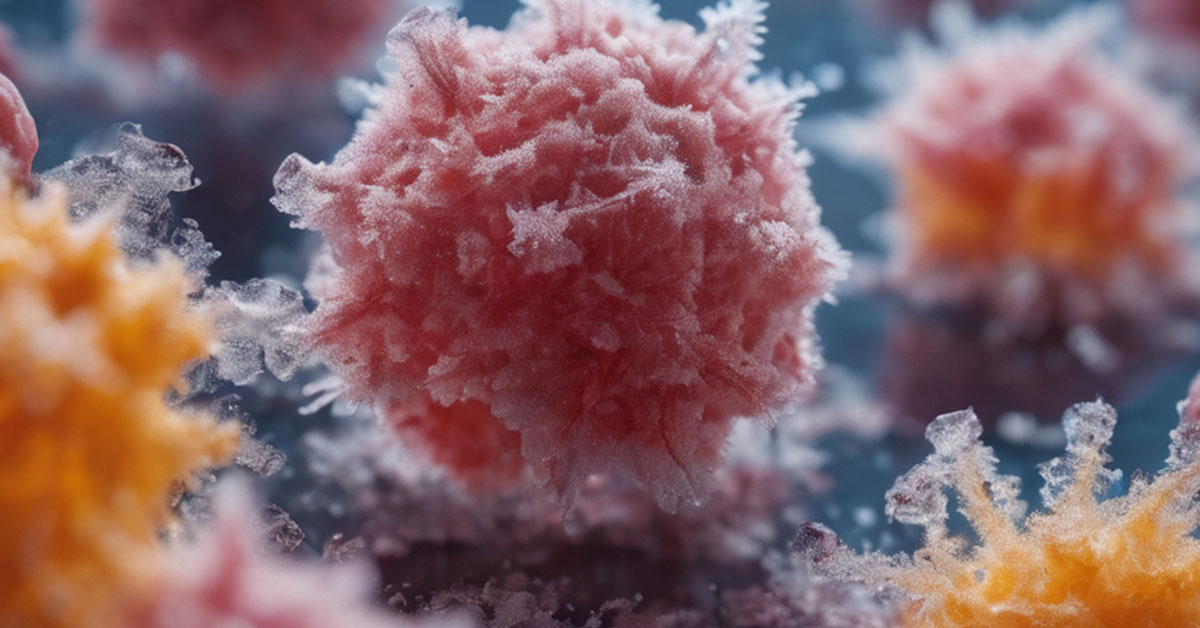 Cryopreservation is a method employed to maintain cells, tissues, organoids, and biological materials at extremely low temperatures.
Cryopreservation is a method employed to maintain cells, tissues, organoids, and biological materials at extremely low temperatures.
What is the reason for preserving at ultra-low temperatures?
To preserve materials for long-term and future use, it’s necessary to halt all physical, chemical, and biological processes at an extremely low temperature, such as -196℃. Controlled cooling is essential to avoid the formation of damaging ice crystals; rapid cooling can harm cell membranes, leading to cell death. Cryopreservation prevents cell death and can be likened to cells entering a hibernation stage. Since cryogenic liquids are gases at normal temperatures, they need to be cooled below room temperature before they can be liquefied upon removal from low-temperature storage. If liquid nitrogen has entered a closed tube, it may rapidly expand (690 times) during the shift from gas to liquid, posing the risk of cryovial explosions, resulting in physical injuries and exposure to the vial contents if mishandled. Therefore, it’s crucial to note the importance of cryopreserving in the vapor phase of liquid nitrogen.
How can cryo damage be avoided?
Utilizing cryoprotectant or antifreeze chemicals like glycerol, ethylene glycol, propylene glycol, or DMSO is a common approach. The addition of a cryoprotectant enhances solvent content, maintaining a balance in solute concentration to prevent ice crystallization and potential cell damage. DMSO and glycerol are typically employed in concentrations ranging from 5-10%, and it’s important not to use them simultaneously. The optimal concentration of the cryoprotectant depends on the cell type, and for the best outcomes, it’s advisable to use cells that can tolerate the highest concentration.
Utilization of preservation
Storage of Rare Germplasm, Sperm Bank, Blood Bank, Seed Bank, Organ Preservation, Freezing Of Cell Culture.
Gradual freezing, or slow cooling, leads to a more substantial loss of water from the cell and a reduced formation of internal ice. This, in turn, amplifies the solution effects. The rate of water loss is influenced by cell permeability, with more permeable cells demonstrating a greater tolerance to rapid cooling compared to less permeable cells.
Risks associated with cryogenic substances
Storage of Rare Germplasm, Sperm Bank, Blood Bank, Seed Bank, Organ Preservation, Freezing Of Cell Culture
Risks associated with cryogenic substances
Different cryogenic substances transition into liquid form under diverse conditions of temperature and pressure. However, they all share several potential hazards, which are detailed below. Exposure to cryogenic liquids, along with their associated cold vapors and gases, can cause adverse effects on the skin, such as thermal burns. While short exposure may not affect the skin, face, and hands, it can damage delicate tissues like the eyes. Therefore, it is essential to use protective gear when handling gaseous cryogens. Some gaseous cryogens pose toxic hazards, leading to specific health effects. For instance, liquid carbon monoxide can release significant amounts of carbon monoxide gas, resulting in immediate harm. Hence, it’s crucial to consult the material safety data sheet for information on the toxic hazards of any particular cryogen used in your laboratory. To prevent the creation of an oxygen-deficient atmosphere, it’s imperative to use and store cryogens in areas with adequate ventilation.
Our offerings include:
At Cornomics, we provide a diverse range of volumes, ranging from 1ml to 5ml, catering to your flexible storage needs. Our externally threaded vials ensure ease of use with a single-handed operation, and they come with a sterility assurance level of Sal 10-6, minimizing the risk of contamination.
